Delamination of Plasticized Devices in Dynamic Service Environments
Abstract
:1. Introduction
2. Delamination Mechanism at the Two-Phase Interface
2.1. Damage by Moisture
2.1.1. How to Characterize Moisture Diffusion
- The model introduces time and space factors to better match the actual diffusion process;
- The model describes wet diffusion inside complex packages and in two-phase boundary layers at the microscopic molecular level;
- The model requires a large computational and experimental effort to determine the model parameters;
- It is difficult to accurately describe the wet diffusion process of the whole macrostructure in a small part of the selected microstructure model.
- An endogenous term r is introduced to compensate for the omission of the temperature term in the advanced normalization method;
- Specific modeling is required for specific problems, with poor generality and macroscopic regularity;
- There is higher computational complexity.
| Wet Diffusion Models | Theoretical Foundations | Improvement Aspects/Problems |
|---|---|---|
| Thermal diffusion analogy [28] | Fick’s Second law of diffusion | Discontinuities in interfacial parameters |
| Normalization method [27] | Introduction of normalized concentration W | Solve the discontinuity of interfacial parameters |
| Advanced normalization method [33] | Introduced temperature T as a parameter | Solve the problem of Csat variation with time |
| Endogenous technique method [37] | Introduce endogenous terms r | Solve the neglect of the temperature term in FEA |
| Peridynamic humidity method [39] | Introduces near-field dynamics High accuracy | Wide range of applicability, but high requirements for experimental equipment |
2.1.2. Physical Damage by Moisture
2.1.3. Chemical Damage by Moisture
- Cu-catalyzed thermo-oxidative degradation: Cu acts as a catalyst involved in the thermo-oxidative decomposition of polymers. The aliphatic C-H bonds, H2O, and O2 in the microcavities in the polymer react under the high temperature catalyzed by Cu+/Cu to generate hydrogen peroxide, which appears as the destruction of the polymer cured cross-link chain.
- Boundary layer weakening phenomenon: (1) The curing agent’s polar functional groups compared to the resin in the hydroxyl group are often preferentially adsorbed on the surface of the Cu metal, resulting in a decrease in the cross-linking density at the interface of the plastic sealing material. (2) At the same time, the water molecules at the interface pores and the chip passivation layer compete for hydrogen bonds with the polymer molecules in the molding material. This competitive chemical binding eventually leads to the emergence of a weak boundary layer phenomenon.
- Cu/CuO/Cu2O interfacial mismatch: Interfacial mismatch is mainly CuO/Cu2O intersecting interfacial lattice mismatch, resulting in a decrease in mechanical interlocking force.
- Surface tension, wettability, and hygroscopicity: The infiltration of the material is manifested as Cu < Cu2O < CuO; poor wettability will lead to a decline in the bonding of Cu and organic polymers.
2.2. Damage by Thermal Stress
2.3. Wrap-Up
3. The Most Recent Solutions for Delamination Failure
3.1. Addition of Barrier Layer on Top of RDL Stacks
3.2. Optimization of Polymer Inorganic Fillers
3.2.1. Diversification of Filler Particle Size
3.2.2. Nanographene Fillers
- The problem of uniform dispersion of graphene filler in polymer matrix still exists.
- The new graphene encapsulation material has strong thermal conductivity, thermo-mechanical properties, and thermal stability, and, to some extent, it enhances the anti-delamination performance of encapsulated devices. However, the interfacial adhesion between the composite material and other interfacial materials, and whether graphene oxidative degradation occurs with high-temperature thermal cycling, causing adhesion to decrease, all need to be further studied.
- The production of graphene requires a high energy input, but the output is small. Further optimization is needed in terms of production cost and scaling up.
3.2.3. Filler Surface Modification
3.3. EMC Introduces Second-Phase Modifier-Block Copolymers
- The synthesis process of BCPs needs to be further optimized and simplified to achieve precise control of the microphase separation structure of BCPs.
- Whether the interfacial compatibility and anti-delamination performance of BCPs can be sustained under extreme conditions in electronic packaging remains to be investigated.
- The high cost of BCPs is a major obstacle to their large-scale application in electronic packaging, and there is a need to expand the synthesis of BCPs from laboratory processing to an industrial processing scale.
- There is less research on the co-toughening application of BCPs as a second-phase modifier and inorganic filler. Although it has been shown that the anti-delamination index of the polymer modified by 1.5 wt% BCP and 83 wt% SiO2 composite reached 74, the reduction in its fluidity and interfacial adhesion can cause the formation of other defects, such as plastic sealing, punching wire, and cavities.
3.4. Application of Conjugated Polymer Self-Healing Technology
- Different shapes of electronic devices need flexible packaging materials to provide protection and support functions;
- At the two-phase interface, conjugated polymers can provide a good stress buffer layer with excellent repair performance;
- Conjugated polymers can automatically repair any damage or malfunction in electronic devices to extend the service life of electronic devices.
- Thermal cycling ability: Conjugated polymers may fail in their self-repairing performance under the extreme working environment of high temperature and temperature cycling, and their thermal stability needs to be further improved.
- Interfacial compatibility: The bonding performance and interfacial compatibility of conjugated polymers as complex chemical materials with other materials under heterogeneous integration need to be further studied.
- Rigidity requirements: The dimensional changes of self-healing materials at high temperatures and humidity may also affect the reliability of electronic packaging. The dimensional changes of self-healing materials at high temperatures and humidity may also affect the reliability of electronic packaging.
- Maturity of self-healing technology: At present, hydrogen bonding, covalent bonding, and many other forms of dynamic bonding need to be applied as a specific post-treatment to achieve self-healing, whereas metal coordination dynamic bonding does not require a specific post-treatment, but needs to be left for more than 24 h to achieve self-healing. Further optimization of the self-healing technology is needed to achieve a short self-healing time of conjugated polymers at room temperature.
3.5. Application of Two-Phase Interface Buffer Layer Technology
4. Summary
- Adding a thin film layer on top of the RDL stack. One approach is to apply ALD technology to deposit an inorganic barrier layer on the top of the RDL stack to isolate the intrusion of O2 and H2O, in order to hinder the oxidation reaction of Cu at high temperature. The polymer processing process of the RDL layer requires ALD technology to realize low-temperature deposition at 120 °C. However, the decrease in inorganic coating densities and barrier properties brought about by low-temperature deposition is a major research challenge that restricts the application of inorganic coatings to the RDL layer. In addition, the cumbersome and expensive steps of ALD technology also limit its industrial- and large-scale application. The second approach is to add a polymer-based thin film layer; a liquid mold material developed as a barrier layer on the top of the RDL stack shows good anti-oxidation and corrosion effects, but its 200 um thickness creates a great challenge to the overall dimensional requirements of the RDL layer.
- Filler optimization. Different shapes of submicron and nano-sized SiO2, AI2O3, and BN binary and ternary fillers have been used to improve the poor fluidity and easy agglomeration of the polymer. Among these, the addition of nano-sized graphene fillers can greatly enhance the mechanical and thermal properties of the overall polymer. However, the dispersibility of graphene fillers and the scale of production are problems that need to be further optimized. In addition, the use of filler surface modification can enhance the compatibility and wettability of the filler with the polymer surface, improve the thermo-mechanical properties of the material, and reduce the moisture absorption effect.
- EMC introduces a second-phase modifier. The 70% to 90% loading rate of inorganic fillers is limiting for composites with excellent encapsulation properties of the polymer matrix. Therefore, the introduction of second-phase modifiers on the basis of inorganic filler modifiers continues to improve the performance of the polymer matrix. Among these, block copolymers, in joint action with inorganic fillers, show excellent mechanical properties; due to the formation of block copolymers in the polymer matrix phase separation microstructure, the composite material of the anti-delamination index can reach 74. However, the addition of BCPs to the composite material reduces mobility and adhesion. Furthermore, the complexity of the BCP synthesis process is higher. These factors impede the large-scale application of BCPs in the field of electronic packaging.
- Self-healing technology. The supramolecular interactions and dynamic bonding realized by the conjugated structure of conjugated polymers endow the polymers with good self-healing properties. In terms of anti-delamination of electronic packaging, they can be used as stress buffer layers and flexible packaging materials to provide excellent protection and repair performance of electronic devices. However, the self-healing properties of such conjugated polymers require specific and complex post-treatments or a long standing time to achieve; therefore, further optimization is required to achieve a short self-healing time of conjugated polymers at room temperature. In addition, the conjugated polymers’ extreme working environment, self-healing properties, and adhesive properties also require further research and optimization.
- Buffer layer technology. The composite interfacial buffer layer is a reliable interfacial layer applied to alleviate the thermal mismatch at the two-phase interface, impede crack propagation, reduce transient thermal resistance, and improve interfacial delamination resistance. The AIN lattice buffer layer, CIC composite buffer layer, and the new nitrogen–aluminum composite buffer coating (AACC) all show excellent thermo-mechanical properties, alleviating the structural changes caused by the compatibility of the two-phase interface and thermal deformation. However, in terms of practical applications, the development of new materials and processes for cushion layers requires further simplification of the production process in order to adapt them to the requirements of large-scale industrialized production.
Author Contributions
Funding
Data Availability Statement
Conflicts of Interest
References
- Moore, G.E. Progress in digital integrated electronics. Electron Devices Meet. 1975, 21, 11–13. [Google Scholar]
- Adibi-Asl, R.; Reinhardt, W. Non-cyclic shakedown/ratcheting boundary determination—Part 1: Analytical approach. Int. J. Press. Vessel. Pip. 2011, 88, 311–320. [Google Scholar] [CrossRef]
- Pan, C.-T.; Wang, S.-Y.; Yen, C.-K.; Ho, C.-K.; Yen, J.-F.; Chen, S.-W.; Fu, F.-R.; Lin, Y.-T.; Lin, C.-H.; Kumar, A.; et al. Study on delamination between polymer materials and metals in IC packaging process. Polymers 2019, 11, 940. [Google Scholar] [CrossRef]
- Liu, L.; Li, E.; Luo, X. Study on delamination variation trend of two plastic packaging devices in combination reliability test. In Proceedings of the 2017 18th International Conference on Electronic Packaging Technology (ICEPT), Harbin, China, 16–19 August 2017. [Google Scholar]
- Wang, Y.; Ding, Y.; Yin, Y. Reliability of Wide Band Gap Power Electronic Semiconductor and Packaging: A Review. Energies 2022, 15, 6670. [Google Scholar] [CrossRef]
- Long, X.; Guo, Y.; Su, Y.; Siow, K.S.; Chen, C. Unveiling the damage evolution of SAC305 during fatigue by entropy generation. Int. J. Mech. Sci. 2023, 244, 108087. [Google Scholar] [CrossRef]
- Marbut, C.J.; Nafis, B.; Huitink, D. Accelerated mechanical low cycle fatigue in isothermal solder interconnects. Microelectron. Reliab. 2021, 116, 113998. [Google Scholar] [CrossRef]
- Mawer, A.; Galles, P.; Benson, M.; Carpenter, B.; Hubble, N. Effect of Package Warpage and Composite Cte on Failure Modes in Board-Level Thermal Cycling. SMTA Int. 2018. [Google Scholar]
- Cui, H.; Tian, W.; Xu, H.; Wang, H.; Huang, J.; Peng, C.; Chen, Z. The Reliability of the Complex Components under Temperature Cycling, Random Vibration, and Combined Loading for Airborne Applications. Crystals 2023, 13, 473. [Google Scholar] [CrossRef]
- Tian, W.; Wang, C.; Zhao, Z.; Feng, X.; Wen, Z. Temperature cycle reliability analysis and life prediction of plastic encapsulated power semiconductor devices. In Proceedings of the 2020 21st International Conference on Electronic Packaging Technology (ICEPT), Guangzhou, China, 12–15 August 2020. [Google Scholar]
- Tian, W.; Wang, C.; Zhao, Z.; Cui, H. Structures and materials of system-in-package: A review. Recent Pat. Mech. Eng. 2021, 14, 28–41. [Google Scholar] [CrossRef]
- Lee, C.C.; Lin, Y.M.; Liu, H.C.; Syu, J.Y.; Huang, Y.C.; Chang, T.C. Reliability evaluation of ultra thin 3D-IC package under the coupling load effects of the manufacturing process and temperature cycling test. Microelectron. Eng. 2021, 244, 111572. [Google Scholar] [CrossRef]
- Cui, H.; Tian, W.; Zhao, X.; Chen, S.; Chen, Z. Effect of the reflow process on IMC growth for different devices and complex components. Smart Mater. Struct. 2022, 31, 115028. [Google Scholar] [CrossRef]
- Guyenot, M.; Maas, D.; Ratchev, R.; Khoshamouz, A.; Gottwald, T.; Kreuer, S. New failure mechanism in high temperature resin materials. In Proceedings of the 2018 IEEE 68th Electronic Components and Technology Conference (ECTC), San Diego, CA, USA, 29 May–1 June 2018. [Google Scholar]
- Chen, Z.; Feng, Z.; Ruan, M.; Xu, G.; Liu, L. Effects of Moisture Diffusion on a System-in-Package Module by Moisture–Thermal–Mechanical-Coupled Finite Element Modeling. Micromachines 2022, 13, 1704. [Google Scholar] [CrossRef]
- Tian, W.; Wang, X.; Niu, J.; Cui, H.; Chen, Y.; Zhang, Y. Research status of wafer level packaging for RF MEMS switches. In Proceedings of the 2020 21st International Conference on Electronic Packaging Technology (ICEPT), Guangzhou, China, 12–15 August 2020. [Google Scholar]
- Fan, X.J.; Lee, S.W.R. Fundamental characteristics of moisture transport, diffusion, and the moisture-induced damages in polymeric materials in electronic packaging. In Moisture Sensitivity of Plastic Packages of IC Devices; Springer: Berlin/Heidelberg, Germany, 2010; pp. 1–28. [Google Scholar]
- Sun, T.; Yu, C.; Yang, W.; Zhong, J.; Xu, Q. Experimental and numerical research on the nonlinear creep response of polymeric composites under humid environments. Compos. Struct. 2020, 251, 112673. [Google Scholar] [CrossRef]
- Han, B.; Kim, D.-S. Moisture ingress, behavior, and prediction inside semiconductor packaging: A review. J. Electron. Packag. 2017, 139, 010802. [Google Scholar] [CrossRef]
- Dušek, K.; Bušek, D.; Veselý, P.; Plaček, M.; Reichl, T.; Sedláček, J.; Mach, P. Analysis of a failure in a molded package caused by electrochemical migration. Eng. Fail. Anal. 2021, 121, 105128. [Google Scholar] [CrossRef]
- Li, G.; Shi, Y.; Tay, A.A.; Long, Z. An Investigation on the Most Likely Failure Locations in the BEoL Stack of a 20 nm Chip Due to Chip Package Interaction with the Use of Novel Semi-Elliptical Cracks. Micromachines 2023, 14, 1953. [Google Scholar] [CrossRef]
- Hodge, R.M.; Edward, G.H.; Simon, G.P. Water absorption and states of water in semicrystalline poly (vinyl alcohol) films. Polymer 1996, 37, 1371–1376. [Google Scholar] [CrossRef]
- Luo, S.; Leisen, J.; Wong, C. Study on mobility of water and polymer chain in epoxy for microelectronic applications. In Proceedings of the 51st Electronic Components and Technology Conference (Cat. No. 01CH37220), Orlando, FL, USA, 29 May–1 June 2001. [Google Scholar]
- Cai, X.; Huang, W.; Xu, B.; Cheng, Z. Water morphology in electronic encapsulation molding materials. Chin. J. Mater. Res. 2002, 16, 507–511. [Google Scholar]
- Liu, R.; Wang, H.; Wang, J.; Lee, H.; Park, S.B.; Xue, X.; Kim, Y.; Saiyed, S.; Sengupta, D. Moisture diffusion and hygroscopic swelling of adhesives in electronics packaging. In Proceedings of the 2016 IEEE 66th Electronic Components and Technology Conference (ECTC), Las Vegas, NV, USA, 31 May–3 June 2016. [Google Scholar]
- Niu, Y.; Wang, J.; Shao, S.; Wang, H.; Lee, H.; Park, S.B. A comprehensive solution for electronic packages’ reliability assessment with digital image correlation (DIC) method. Microelectron. Reliab. 2018, 87, 81–88. [Google Scholar] [CrossRef]
- Wang, J.; Niu, Y.; Shao, S.; Wang, H.; Xu, J.; Pham, V.; Park, S. A comprehensive solution for modeling moisture induced delamination in electronic packaging during solder reflow. Microelectron. Reliab. 2020, 112, 113791. [Google Scholar] [CrossRef]
- He, Y.; Kabiri, M. In-situ characterization of moisture absorption and hygroscopic swelling of an epoxy molding compound for electronic packaging. J. Therm. Anal. Calorim. 2021, 147, 5667–5675. [Google Scholar] [CrossRef]
- Fan, X.J.; Lee, S.W.R.; Han, Q. Experimental investigations and model study of moisture behaviors in polymeric materials. Microelectron. Reliab. 2009, 49, 861–871. [Google Scholar] [CrossRef]
- Wong, E.; Rajoo, R. M Moisture absorption and diffusion characterisation of packaging materials—Advanced treatment. Microelectron. Reliab. 2003, 43, 2087–2096. [Google Scholar] [CrossRef]
- Bao, L.-R.; Yee, A.F. Effect of temperature on moisture absorption in a bismaleimide resin and its carbon fiber composites. Polymer 2002, 43, 3987–3997. [Google Scholar] [CrossRef]
- Shi, Y.; Tay, A.A.O.; Wong, E.H.; Ranjan, R. An effective method of characterizing moisture desorption of polymeric materials at high temperature. In Proceedings of the 4th Electronics Packaging Technology Conference, Singapore, 10–12 December 2002. [Google Scholar]
- Jang, C.; Park, S.; Han, B.; Yoon, S. Advanced thermal-moisture analogy scheme for anisothermal moisture diffusion problem. J. Electron. Packag. 2008, 130, 11004. [Google Scholar] [CrossRef]
- Khalilullah, I.; Reza, T.; Chen, L.; Mazumder, A.M.; Fan, J.; Qian, C.; Zhang, G.; Fan, X. In-situ characterization of moisture absorption and hygroscopic swelling of silicone/phosphor composite film and epoxy mold compound in LED packaging. In Proceedings of the 2017 18th International Conference on Thermal, Mechanical and Multi-Physics Simulation and Experiments in Microelectronics and Microsystems (EuroSimE), Dresden, Germany, 3–5 April 2017. [Google Scholar]
- Placette, M.D.; Fan, X.; Zhao, J.H.; Edwards, D. A dual stage model of anomalous moisture diffusion and desorption in epoxy mold compounds. In Proceedings of the 2011 12th International Conference on Thermal, Mechanical & Multi-Physics Simulation and Experiments in Microelectronics and Microsystems, Linz, Austria, 18–20 April 2011. [Google Scholar]
- Wong, E. The fundamentals of thermal-mass diffusion analogy. Microelectron. Reliab. 2015, 55, 588–595. [Google Scholar] [CrossRef]
- Wong, E.; Park, S.B. Moisture diffusion modeling—A critical review. Microelectron. Reliab. 2016, 65, 318–326. [Google Scholar] [CrossRef]
- Wang, J.; Liu, R.; Liu, D.; Park, S. Advancement in simulating moisture diffusion in electronic packages under dynamic thermal loading conditions. Microelectron. Reliab. 2017, 73, 42–53. [Google Scholar] [CrossRef]
- Diyaroglu, C.; Oterkus, S.; Oterkus, E.; Madenci, E.; Han, S.; Hwang, Y. Peridynamic wetness approach for moisture concentration analysis in electronic packages. Microelectron. Reliab. 2017, 70, 103–111. [Google Scholar] [CrossRef]
- Abuelnaga, A.; Narimani, M.; Bahman, A.S. A review on IGBT module failure modes and lifetime testing. IEEE Access 2021, 9, 9643–9663. [Google Scholar] [CrossRef]
- Adibi-Asl, R.; Reinhardt, W. Non-cyclic shakedown/ratcheting boundary determination—Part 2: Numerical implementation. Int. J. Press. Vessel. Pip. 2011, 88, 321–329. [Google Scholar] [CrossRef]
- Nguyen, Q.; Roberts, J.C.; Suhling, J.C.; Jaeger, R.C.; Lall, P. A study on die stresses in flip chip package subjected to various hygrothermal exposures. In Proceedings of the 2018 17th IEEE Intersociety Conference on Thermal and Thermomechanical Phenomena in Electronic Systems (ITherm), San Diego, CA, USA, 29 May–1 June 2018. [Google Scholar]
- Dong, H.; Wu, Y.; Li, C.; Xu, H. Investigation of the Degradation Mechanism of SiC MOSFET Subjected to Multiple Stresses. Micromachines 2023, 14, 1469. [Google Scholar] [CrossRef]
- Wei, Q.; Yang, H.; Sun, N.; Ma, X.; Liu, W. Research on Improving the Delamination of Electronic Packaging Product. In Proceedings of the 2022 23rd International Conference on Electronic Packaging Technology (ICEPT), Dalian, China, 10–13 August 2022. [Google Scholar]
- Li, N.; Zhao, W.; Yang, J.; Wang, Y. Analysis of the failure modes and causes of the IPM module. In Proceedings of the 12th International Conference on Quality, Reliability, Risk, Maintenance, and Safety Engineering (QR2MSE 2022), Emeishan, China, 27–30 July 2022; pp. 356–360. [Google Scholar]
- Yu, Z.; Li, J.; Lin, J.; Wang, L.; Wang, J.; Zheng, P.P.; Cheng, X. Discussion on influence of moisture absorption on the reliability of integrated circuit package. In Proceedings of the 2021 IEEE 2nd International Conference on Information Technology, Big Data and Artificial Intelligence (ICIBA), Chongqing, China, 17–19 December 2021; Volume 2. [Google Scholar]
- Sporleder, K.; Naumann, V.; Bauer, J.; Richter, S.; Hähnel, A.; Großer, S.; Turek, M.; Hagendorf, C. Local corrosion of silicon as root cause for potential-induced degradation at the rear side of bifacial PERC solar cells. Phys. Status Solidi (RRL) Rapid Res. Lett. 2019, 13, 1900163. [Google Scholar] [CrossRef]
- Liao, J.L.; Wang, B.; Zhang, X.; Hua, Y.; Li, X. Study of moisture penetration in chip passivation layer by deuterium oxide (D2O) isotope tracing technique. In Proceedings of the 2023 IEEE International Symposium on the Physical and Failure Analysis of Integrated Circuits (IPFA), Pulau Pinang, Malaysia, 24–27 July 2023. [Google Scholar]
- Chery, E.; Brady-Boyd, A.; Lin, Y.; Grimes, M.; Springer, D.; Slabbekoorn, J.; Walsby, E.; Croes, K.; Beyne, E. Vapor deposited thin organic–inorganic capping layers preventing copper line oxidation in polymer-based RDL technologies. Microelectron. Eng. 2022, 266, 111896. [Google Scholar] [CrossRef]
- Sharpe, L.H. The interphase in adhesion. J. Adhes. 1972, 4, 51–64. [Google Scholar] [CrossRef]
- Nothdurft, P.; Riess, G.; Kern, W. Copper/epoxy joints in printed circuit boards: Manufacturing and interfacial failure mechanisms. Materials 2019, 12, 550. [Google Scholar] [CrossRef]
- Yamamoto, K.Y.K. Development of mechanical stress simulator for surface-mount devices. Jpn. J. Appl. Phys. 1995, 34, 2043. [Google Scholar] [CrossRef]
- Zhao, S.; Chen, C.; Haga, M.; Ueshima, M.; Suzuki, H.; Takenaka, H.; Hirahara, H.; Sang, J.; Suganuma, K. Influence of interfacial interaction on the reliability of the bond between encapsulation epoxy and copper substrate. Microelectron. Reliab. 2023, 149, 115211. [Google Scholar] [CrossRef]
- Pender, K.; Yang, L. Investigation of the potential for catalysed thermal recycling in glass fibre reinforced polymer composites by using metal oxides. Compos. Part A Appl. Sci. Manuf. 2017, 100, 285–293. [Google Scholar] [CrossRef]
- Alavinia, S.; Ghorbani-Vaghei, R.; Rakhtshah, J.; Yousefi Seyf, J.; Ali Arabian, I. Copper iodide nanoparticles-decorated porous polysulfonamide gel: As effective catalyst for decarboxylative synthesis of N-Arylsulfonamides. Appl. Organomet. Chem. 2020, 34, e5449. [Google Scholar] [CrossRef]
- Yan, H.; Wang, P.; Li, R.; Xu, Z. Aging behaviour of encapsulated assemblies of epoxy resin under accelerated thermal cycling. Int. J. Polym. Anal. Charact. 2022, 27, 180–194. [Google Scholar] [CrossRef]
- Conversion, A.; Ubando, A.T.; Gonzaga, J. Interfacial Delamination Validation on Fan-Out Wafer-Level Package Using Finite Element Method. Solid State Phenom. 2023, 343, 73–78. [Google Scholar] [CrossRef]
- Chen, C.; Su, M.; Ma, R.; Zhou, Y.; Li, J.; Cao, L. Investigation of warpage for multi-die Fan-out wafer-level packaging process. Materials 2022, 15, 1683. [Google Scholar] [CrossRef] [PubMed]
- Salahouelhadj, A.; Gonzalez, M.; Vanstreels, K.; Van der Plas, G.; Beyer, G.; Beyne, E. Analysis of warpage of a flip-chip BGA package under thermal loading: Finite element modelling and experimental validation. Microelectron. Eng. 2023, 271, 111947. [Google Scholar] [CrossRef]
- Cherman, V.; Lofrano, M.; Gonzalez, M.; Cadacio, F.; Rebibis, K.J.; Beyne, E.; Takano, A.; Higashi, M. Evaluation of mechanical stress induced during IC packaging. In Proceedings of the 2018 IEEE 68th Electronic Components and Technology Conference (ECTC), San Diego, CA, USA, 29 May–1 June 2018. [Google Scholar]
- Xue, K.; Lu, D.; Chen, K.; Qin, Y.; Li, D.; Tang, Q. Failure Mechanism Study for Flip Chip QFN Crack Issue under Temperature Cycling Test. In Proceedings of the 2021 22nd International Conference on Electronic Packaging Technology (ICEPT), Xiamen, China, 14–17 September 2021. [Google Scholar]
- Lau, J.H.; Ko, C.-T.; Peng, C.-Y.; Yang, K.-M.; Xia, T.; Lin, P.B.; Chen, J.-J.; Huang, P.-C.; Tseng, T.-J.; Lin, E.; et al. Thermal cycling test and simulation of fan-out chip-last panel-level packaging for heterogeneous integration. J. Microelectron. Electron. Packag. 2021, 18, 29–39. [Google Scholar] [CrossRef]
- Shie, K.C.; Hsu, P.N.; Li, Y.J.; Tran, D.P.; Chen, C. Failure Mechanisms of Cu–Cu bumps under thermal cycling. Materials 2021, 14, 5522. [Google Scholar] [CrossRef] [PubMed]
- Chen, X.; Cheng, J.; Wu, H.; Liu, L. Open failure mechanisms of FCBGA package under temperature cycling stress. In Proceedings of the 2017 IEEE 24th International Symposium on the Physical and Failure Analysis of Integrated Circuits (IPFA), Chengdu, China, 4–7 July 2017. [Google Scholar]
- Linke, J.; Glatthaar, R.; Huster, F.; Okker, T.; Möller, S.; Hahn, G.; Terheiden, B. Poly-Si thickness and temperature dependent oxide disruption induced by penetration of the interfacial oxide in (p) poly-Si/SiOx passivating contacts. Sol. Energy Mater. Sol. Cells 2022, 246, 111890. [Google Scholar] [CrossRef]
- Fan, Y.; Dong, L.; Zhang, Y.; Wang, Z.; Meng, M. Reliability Issues and Thoughts on Fan-Out Wafer-Level Packaging. Electron. Compon. Mater. 2023, 42, 505. [Google Scholar]
- Lau, J.H.; Li, M.; Qingqian, M.L.; Chen, T.; Xu, I.; Yong, Q.X.; Cheng, Z.; Fan, N.; Kuah, E.; Li, Z.; et al. Fan-out wafer-level packaging for heterogeneous integration. IEEE Trans. Compon. Packag. Manuf. Technol. 2018, 8, 1544–1560. [Google Scholar] [CrossRef]
- Oh, G.H.; Joo, S.J.; Jeong, J.W.; Kim, H.S. Effect of plasma treatment on adhesion strength and moisture absorption characteristics between epoxy molding compound/silicon chip (EMC/chip) interface. Microelectron. Reliab. 2019, 92, 63–72. [Google Scholar] [CrossRef]
- Shih, M.K.; Liu, Y.H.; Lee, C.; Hung, C.P. Reliability Evaluation of Board-Level Flip-Chip Package under Coupled Mechanical Compression and Thermal Cycling Test Conditions. Materials 2023, 16, 4291. [Google Scholar] [CrossRef] [PubMed]
- DeHaven, K.; Dietz, J. Controlled collapse chip connection (C4)-an enabling technology. In Proceedings of the 1994 Proceedings. 44th Electronic Components and Technology Conference, Washington, DC, USA, 1–4 May 1994. [Google Scholar]
- Koh, W.; Lin, B.; Tai, J. Copper pillar bump technology progress overview. In Proceedings of the 2011 12th International Conference on Electronic Packaging Technology and High Density Packaging, Shanghai, China, 8–11 August 2011. [Google Scholar]
- Chen, K.; Ling, H.; Guo, F.; Li, M.; Zhang, W.; Cao, L. Effect of Ni barrier layer thickness on IMCs evolution in Φ5μm Cu/Ni/Sn pillar bumps. In Proceedings of the 2018 19th International Conference on Electronic Packaging Technology (ICEPT), Shanghai, China, 8–11 August 2018. [Google Scholar]
- Shih, M.-K.; Lin, G.-S.; Yang, J. Effects of Thermal-Moisture Coupled Field on Delamination Behavior of Electronic Packaging. J. Electron. Packag. 2024, 146, 31002. [Google Scholar] [CrossRef]
- Wang, S.; Jia, Z.; Wang, Y. Study on the layering problem of typical tide-sensitive components. Electron. Process Technol. 2019, 40, 5. [Google Scholar]
- Chu, Y.; Zhou, Y.; Chen, H.; Chen, B. Research on Highly Reliable Plastic Packaging Technology. Electron. Prod. Reliab. Environ. Test. 2021, 39, 6. [Google Scholar]
- Du, X. Study on the delamination problem of plastisol in reflow soldering. China Integr. Circuits 2020, 29, 5. [Google Scholar]
- Pai, H.T.; Lin, C.-H. Experimental and numerical investigation into the plasma treatment and chip delamination in semiconductor packaging. IEEE Trans. Plasma Sci. 2020, 48, 3915–3920. [Google Scholar] [CrossRef]
- Pan, C.T.; Wu, C.N.; Mao, S.W.; Wang, S.Y.; Ju, S.P.; Wu, J.D.; Yen, C.K.; Chen, W.F. Adhesion–delamination phenomena at the interfaces of the dielectric layer. Results Phys. 2020, 18, 103249. [Google Scholar] [CrossRef]
- Chen, B.; Lyu, G.C.; Wang, H.G.; Zheng, L.; Deng, Y.K.; Zhang, X.P. A combined simulation and experimental study on cracking and delamination behavior at the Cu/Polyimide interface of RDLs in chiplet package subjected to thermo-mechanical loads. In Proceedings of the 2023 IEEE 73rd Electronic Components and Technology Conference (ECTC), Orlando, FL, USA, 30 May–2 June 2023. [Google Scholar]
- Chiu, T.C.; Wu, J.Y.; Liu, W.T.; Liu, C.W.; Chen, D.L.; Shih, M.; Tarng, D. A mechanics model for the moisture induced delamination in fan-out wafer-level package. In Proceedings of the 2020 IEEE 70th Electronic Components and Technology Conference (ECTC), Orlando, FL, USA, 3–30 June 2020. [Google Scholar]
- Daubert, J.S.; Hill, G.T.; Gotsch, H.N.; Gremaud, A.P.; Ovental, J.S.; Williams, P.S.; Oldham, C.J.; Parsons, G.N. Corrosion protection of copper using Al2O3, TiO2, ZnO, HfO2, and ZrO2 atomic layer deposition. ACS Appl. Mater. Interfaces 2017, 9, 4192–4201. [Google Scholar] [CrossRef]
- Li, C.; Cauwe, M.; Mader, L.; Schaubroeck, D.; Op de Beeck, M. Accelerated hermeticity testing of biocompatible moisture barriers used for the encapsulation of implantable medical devices. Coatings 2019, 10, 19. [Google Scholar] [CrossRef]
- Brady-Boyd, A.; Chery, E.; Armini, S. Investigating the Efficacy of Hafnium Dioxide Barrier Layers to Halt Copper Oxide Formation in Redistribution Layers for Three-Dimensional (3D) Packaging. J. Phys. Chem. Lett. 2022, 13, 8130–8133. [Google Scholar] [CrossRef]
- Pinho, N.; Chery, E.; Bhatia, R.; Sundaram, G.; Slabbekoorn, J.; Krishtab, M.; Miller, A.; Beyne, E. Inorganic capping layers in advanced photosensitive polymer based RDL processes: Processing and reliability. In Proceedings of the 2023 IEEE 73rd Electronic Components and Technology Conference (ECTC), Orlando, FL, USA, 30 May–2 June 2023. [Google Scholar]
- Chery, E.; Brady-Boyd, A.; Bhatia, R.; Pinho, N.; Slabbekoorn, J.; Armini, S.; Sundaram, G.; Beyne, E. Inorganic Capping Layers in RDL Technologies: Process Advantages and Reliability. JOM 2023, 75, 5096–5102. [Google Scholar] [CrossRef]
- Wu, Z.J.G.; Wang, P.C.; Choi, S.; Justison, P.; Gall, M.; Cho, J.K.; Hirokawa, T.; Bian, Y.; Houghton, T.; Karra, V.; et al. Self-aligned Fiber Attach on Monolithic Silicon Photonic Chips: Moisture Effect and Hermetic Seal. In Optical Fiber Communication Conference; Optica Publishing Group: Washington, DC, USA, 2023. [Google Scholar]
- Chery, E.; Duval, F.F.; Stucchi, M.; Slabbekoorn, J.; Croes, K.; Beyne, E. Reliability Study of Polymers Used in Sub-4-μm Pitch RDL Applications. IEEE Trans. Compon. Packag. Manuf. Technol. 2021, 11, 1073–1080. [Google Scholar] [CrossRef]
- Kwak, J.Y.; Chery, E.; Bertheau, J.; Slabbekoorn, J.; De Messemaeker, J.; Beyne, E. Reliability Investigations of Polymer Based Redistribution Layers (RDL) Protected by a Mold Layer. In Proceedings of the 2023 IEEE 73rd Electronic Components and Technology Conference (ECTC), Orlando, FL, USA, 30 May–2 June 2023. [Google Scholar]
- Ren, T.; Tang, G.; Yuan, B.; Yan, Z.; Ma, L.; Huang, X. One-step fabrication of robust superhydrophobic coatings with corrosion resistance by a self-curing epoxy-resin-based adhesive. Surf. Coat. Technol. 2019, 380, 125086. [Google Scholar] [CrossRef]
- Zhang, X.; Liu, W.; Liu, W.; Qiu, X. High performance PVA/lignin nanocomposite films with excellent water vapor barrier and UV-shielding properties. Int. J. Biol. Macromol. 2020, 142, 551–558. [Google Scholar] [CrossRef] [PubMed]
- Kim, H.; Nam, K.; Lee, D.Y. Fabrication of robust superhydrophobic surfaces with dual-curing siloxane resin and controlled dispersion of nanoparticles. Polymers 2020, 12, 1420. [Google Scholar] [CrossRef] [PubMed]
- Wan, Y.J.; Li, G.; Yao, Y.M.; Zeng, X.L.; Zhu, P.L.; Sun, R. Recent advances in polymer-based electronic packaging materials. Compos. Commun. 2020, 19, 154–167. [Google Scholar] [CrossRef]
- Wen, Y.; Chen, C.; Ye, Y.; Xue, Z.; Liu, H.; Zhou, X.; Zhang, Y.; Li, D.; Xie, X.; Mai, Y.W. Advances on Thermally Conductive Epoxy-Based Composites as Electronic Packaging Underfill Materials—A Review. Adv. Mater. 2022, 34, 2201023. [Google Scholar] [CrossRef] [PubMed]
- Guo, Q.; Zhu, P.; Li, G.; Huang, L.; Zhang, Y.; Lu, D.D.; Sun, R.; Wong, C. One-pot synthesis of bimodal silica nanospheres and their effects on the rheological and thermal–mechanical properties of silica–epoxy composites. RSC Adv. 2015, 5, 50073–50081. [Google Scholar] [CrossRef]
- Zhang, X.M.; Yang, X.L.; Wang, B. Electrical properties of electrically conductive adhesives from epoxy and silver-coated copper powders after sintering and thermal aging. Int. J. Adhes. Adhes. 2021, 105, 102785. [Google Scholar] [CrossRef]
- Feng, Q.K.; Liu, C.; Zhang, D.L.; Song, Y.H.; Sun, K.; Xu, H.P.; Dang, Z.M. Particle packing theory guided multiscale alumina filled epoxy resin with excellent thermal and dielectric performances. J. Mater. 2022, 8, 1058–1066. [Google Scholar] [CrossRef]
- Lee Sanchez, W.A.; Huang, C.Y.; Chen, J.X.; Soong, Y.C.; Chan, Y.N.; Chiou, K.C.; Lee, T.M.; Cheng, C.C.; Chiu, C.W. Enhanced thermal conductivity of epoxy composites filled with Al2O3/boron nitride hybrids for underfill encapsulation materials. Polymers 2021, 13, 147. [Google Scholar] [CrossRef] [PubMed]
- Song, P.; Peng, Z.J.; Yue, Y.L.; Zhang, H.; Zhang, Z.; Fan, Y.C. Mechanical properties of silicone composites reinforced with micron-and nano-sized magnetic particles. Express Polym. Lett. 2013, 7, 546–553. [Google Scholar] [CrossRef]
- Huang, T.; Zeng, X.; Yao, Y.; Sun, R.; Meng, F.; Xu, J.; Wong, C. A novel h-BN–RGO hybrids for epoxy resin composites achieving enhanced high thermal conductivity and energy density. RSC Adv. 2017, 7, 23355–23362. [Google Scholar] [CrossRef]
- Dul, S.; Fambri, L.; Pegoretti, A. Fused deposition modelling with ABS–graphene nanocomposites. Compos. Part A Appl. Sci. Manuf. 2016, 85, 181–191. [Google Scholar] [CrossRef]
- Tambrallimath, V.; Keshavamurthy, R.; Bavan, S.D.; Patil, A.Y.; Yunus Khan, T.M.; Badruddin, I.A.; Kamangar, S. Mechanical properties of PC-ABS-based graphene-reinforced polymer nanocomposites fabricated by FDM process. Polymers 2021, 13, 2951. [Google Scholar] [CrossRef] [PubMed]
- Dong, R.; Liu, L. Preparation and properties of acrylic resin coating modified by functional graphene oxide. Appl. Surf. Sci. 2016, 368, 378–387. [Google Scholar] [CrossRef]
- Peng, W.; Huang, X.; Yu, J.; Jiang, P.; Liu, W. Electrical and thermophysical properties of epoxy/aluminum nitride nanocomposites: Effects of nanoparticle surface modification. Compos. Part A Appl. Sci. Manuf. 2010, 41, 1201–1209. [Google Scholar] [CrossRef]
- Li, G.; Zhu, P.; Huang, L.; Zhao, T.; Sun, R.; Lu, D. D Investigating the rheological and thermomechanical properties of SiO2/epoxy nanocomposites: Probing the role of silane coupling agent. In Proceedings of the 2014 15th International Conference on Electronic Packaging Technology, Chengdu, China, 12–15 August 2014. [Google Scholar]
- Li, G.; He, Y.; Zhu, P.; Zhao, T.; Sun, R.; Lu, D.; Wong, C.P. Tailored surface chemistry of SiO2 particles with improved rheological, thermal-mechanical and adhesive properties of epoxy based composites for underfill applications. Polymer 2018, 156, 111–120. [Google Scholar] [CrossRef]
- Li, G.; Zhao, T.; Zhu, P.; He, Y.; Sun, R.; Lu, D.; Wong, C.P. Structure-property relationships between microscopic filler surface chemistry and macroscopic rheological, thermo-mechanical, and adhesive performance of SiO2 filled nanocomposite underfills. Compos. Part A Appl. Sci. Manuf. 2019, 118, 223–234. [Google Scholar] [CrossRef]
- Jung, D.W.; Kim, J.M.; Yoon, H.W.; Nam, K.M.; Kwon, Y.E.; Jeong, S.; Baek, Y.H.; Choi, Y.S.; Chang, S.J.; Yi, G.-R.; et al. Solution-processable thermally conductive polymer composite adhesives of benzyl-alcohol-modified boron nitride two-dimensional nanoplates. Chem. Eng. J. 2019, 361, 783–791. [Google Scholar] [CrossRef]
- Sun, Z.; Wong, R.; Yu, M.; Li, J.; Zhang, M.; Mele, L.; Hah, J.; Kathaperumal, M.; Wong, C.P. Nanocomposites for future electronics device Packaging: A fundamental study of interfacial connecting mechanisms and optimal conditions of silane coupling agents for Polydopamine-Graphene fillers in epoxy polymers. Chem. Eng. J. 2022, 439, 135621. [Google Scholar] [CrossRef]
- Luo, X.; Li, Y.; Sun, Z.; Wang, G.; Xin, J. Preparation and research of epoxy modified by carboxyl-terminated polybutylene adipate at room temperature. RSC Adv. 2022, 12, 20471–20480. [Google Scholar] [CrossRef] [PubMed]
- Jayan, J.S.; Saritha, A.; Joseph, K. Innovative materials of this era for toughening the epoxy matrix: A review. Polym. Compos. 2018, 39, E1959–E1986. [Google Scholar] [CrossRef]
- Marouf, B.T.; Bagheri, R. Applications of epoxy/rubber blends. In Handbook of Epoxy Blends; Parameswaranpillai, J., Hameed, N., Pionteck, J., Woo, E.M., Eds.; Springer: Berlin/Heidelberg, Germany, 2017; pp. 399–426. [Google Scholar]
- Lee, M.; Paria, S.; Mondal, S.; Lee, G.-B.; Shin, B.; Kim, S.; Park, S.; Nah, C. Amphiphilic block co-polymer and silica reinforced epoxy composite with excellent toughness and delamination resistance for durable electronic packaging application. Polymer 2022, 245, 124679. [Google Scholar] [CrossRef]
- Li, G.; Wu, W.; Yu, X.; Zhang, R.; Sun, R.; Cao, L.; Zhu, P. Effects of Block Copolymer Terminal Groups on Toughening Epoxy-Based Composites: Microstructures and Toughening Mechanisms. Micromachines 2023, 14, 2112. [Google Scholar] [CrossRef] [PubMed]
- Yang, Y.; Wu, H.; Peng, T.; Yang, J.; Wang, B.; Lin, H.; Li, G.; Zhu, P.; Sun, R. The Effect of Toughening Agents on Capillary Underfill in the Flip Chip Package. In Proceedings of the 2021 22nd International Conference on Electronic Packaging Technology (ICEPT), Xiamen, China, 14–17 September 2021. [Google Scholar]
- Ocheje, M.U.; Selivanova, M.; Zhang, S.; Van Nguyen, T.H.; Charron, B.P.; Chuang, C.-H.; Cheng, Y.-H.; Billet, B.; Noori, S.; Chiu, Y.-C.; et al. Influence of amide-containing side chains on the mechanical properties of diketopyrrolopyrrole-based polymers. Polym. Chem. 2018, 9, 5531–5542. [Google Scholar] [CrossRef]
- Yu, X.; Li, C.; Gao, C.; Chen, L.; Zhang, X.; Zhang, G.; Zhang, D. Enhancing the healing ability and charge transport thermal stability of a diketopyrrolopyrrole based conjugated polymer by incorporating coumarin groups in the side chains. J. Polym. Sci. 2021, 60, 517–524. [Google Scholar] [CrossRef]
- Oh, J.Y.; Son, D.; Katsumata, T.; Lee, Y.; Kim, Y.; Lopez, J.; Wu, H.-C.; Kang, J.; Park, J.; Gu, X.; et al. Stretchable self-healable semiconducting polymer film for active-matrix strain-sensing array. Sci. Adv. 2019, 5, eaav3097. [Google Scholar] [CrossRef]
- Voorhaar, L.; Chan, E.W.C.; Baek, P.; Wang, M.; Nelson, A.; Barker, D.; Travas-Sejdic, J. Self-healing polythiophene phenylenes for stretchable electronics. Eur. Polym. J. 2018, 105, 331–338. [Google Scholar] [CrossRef]
- Lee, M.Y.; Dharmapurikar, S.; Lee, S.J.; Cho, Y.; Yang, C.; Oh, J.H. Regular H-Bonding-Containing polymers with stretchability up to 100% external strain for self-healable plastic transistors. Chem. Mater. 2020, 32, 1914–1924. [Google Scholar] [CrossRef]
- Liu, A.C.; Lai, Y.Y.; Chen, H.C.; Chiu, A.P.; Kuo, H.C. A Brief Overview of the Rapid Progress and Proposed Improvements in Gallium Nitride Epitaxy and Process for Third-Generation Semiconductors with Wide Bandgap. Micromachines 2023, 14, 764. [Google Scholar] [CrossRef] [PubMed]
- Zhang, Z.Z.; Yang, J.; Zhao, D.G.; Liang, F.; Chen, P.; Liu, Z.S. Influence of the lattice parameter of the AlN buffer layer on the stress state of GaN film grown on (111) Si. Chin. Phys. B 2023, 32, 28101. [Google Scholar] [CrossRef]
- McLeod, A.J.; Ueda, S.T.; Lee, P.C.; Spiegelman, J.; Kanjolia, R.; Moinpour, M.; Woodruff, J.; Kummel, A.C. Pulsed chemical vapor deposition for crystalline aluminum nitride thin films and buffer layers on silicon and silicon carbide. Thin Solid Film. 2023, 768, 139717. [Google Scholar] [CrossRef]
- Notsu, H.; Michikoshi, H.; Shinkai, J.; Tanaka, S.; Sato, H.; Sakamoto, K.; Mikamura, Y. SiC module operational at 200 °C with high power-cycling capability using fatigue-free chip surface packaging technologies. In Proceedings of the PCIM Europe Digital Days 2020; International Exhibition and Conference for Power Electronics, Intelligent Motion, Renewable Energy and Energy Management, Nuremberg, Germany, 7–8 July 2020. [Google Scholar]
- Tanaka, S.; Shinkai, J.; Ikegawa, M.; Kato, F.; Sato, H.; Kurashima, H.; Mikamura, Y. Chip-Top Packaging Technology for SiC Devices Operational at 250 °C with Power-Cycling Durability of over 300,000 Cycles. In Materials Science Forum; Trans Tech Publications Ltd.: Bäch, Switzerland, 2023; Volume 1092. [Google Scholar]
- Li, G.; Wang, C.; Zhang, H.; Zhuang, M.; Hu, Z.; Liu, Y.; Wang, L. Preliminary design of a novel AlN-Al composite coating used for micro-electronic packaging via finite element modeling. Mater. Lett. 2020, 280, 128598. [Google Scholar] [CrossRef]
- Liu, S.; Mei, Y.H.; Li, J.; Li, X.; Lu, G.Q. Copper-Wire Stress Buffers for Extending Lifetime of Double-Sided Bidirectional SiC Modules. IEEE Trans. Power Electron. 2023, 38, 7118–7127. [Google Scholar] [CrossRef]







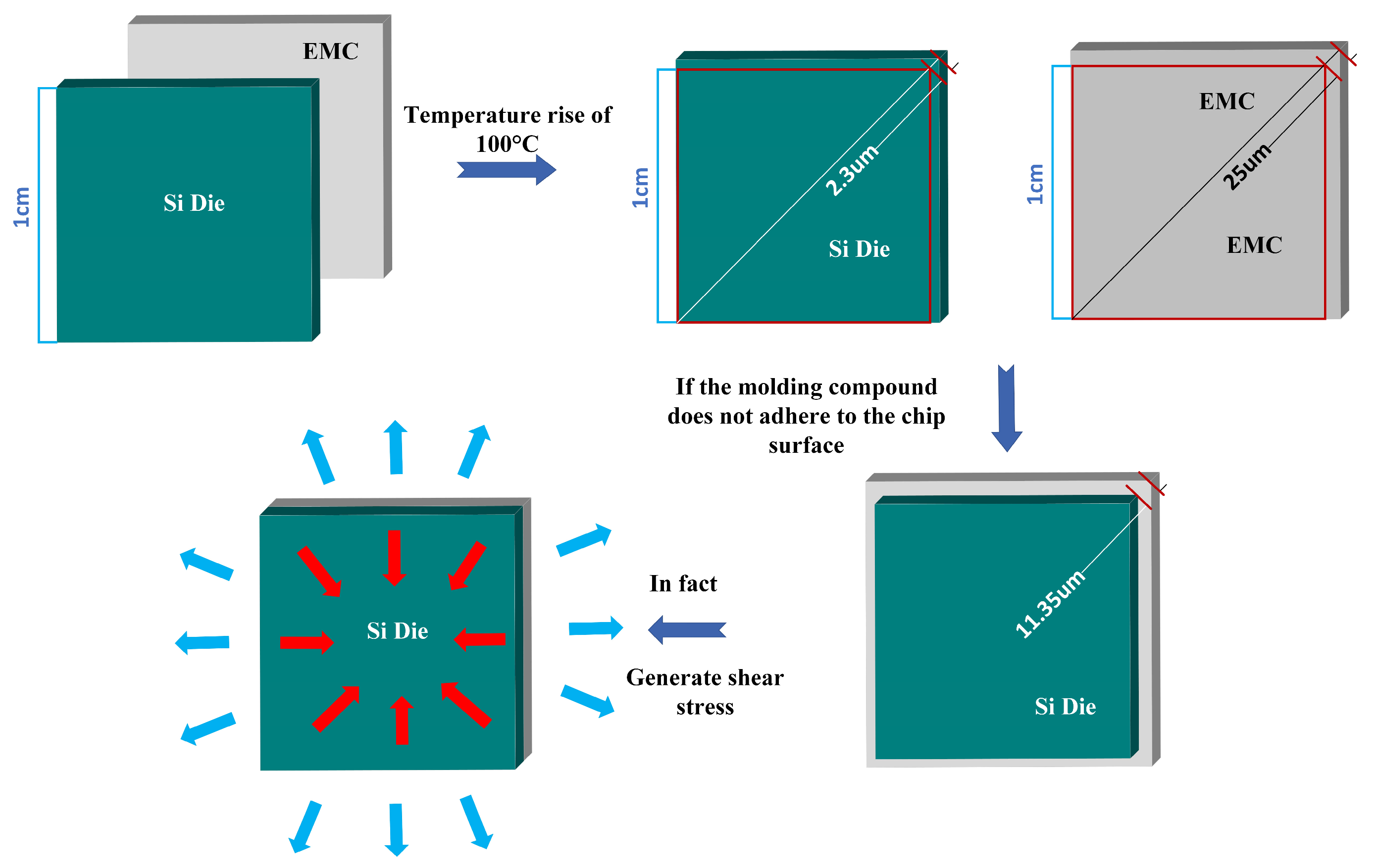
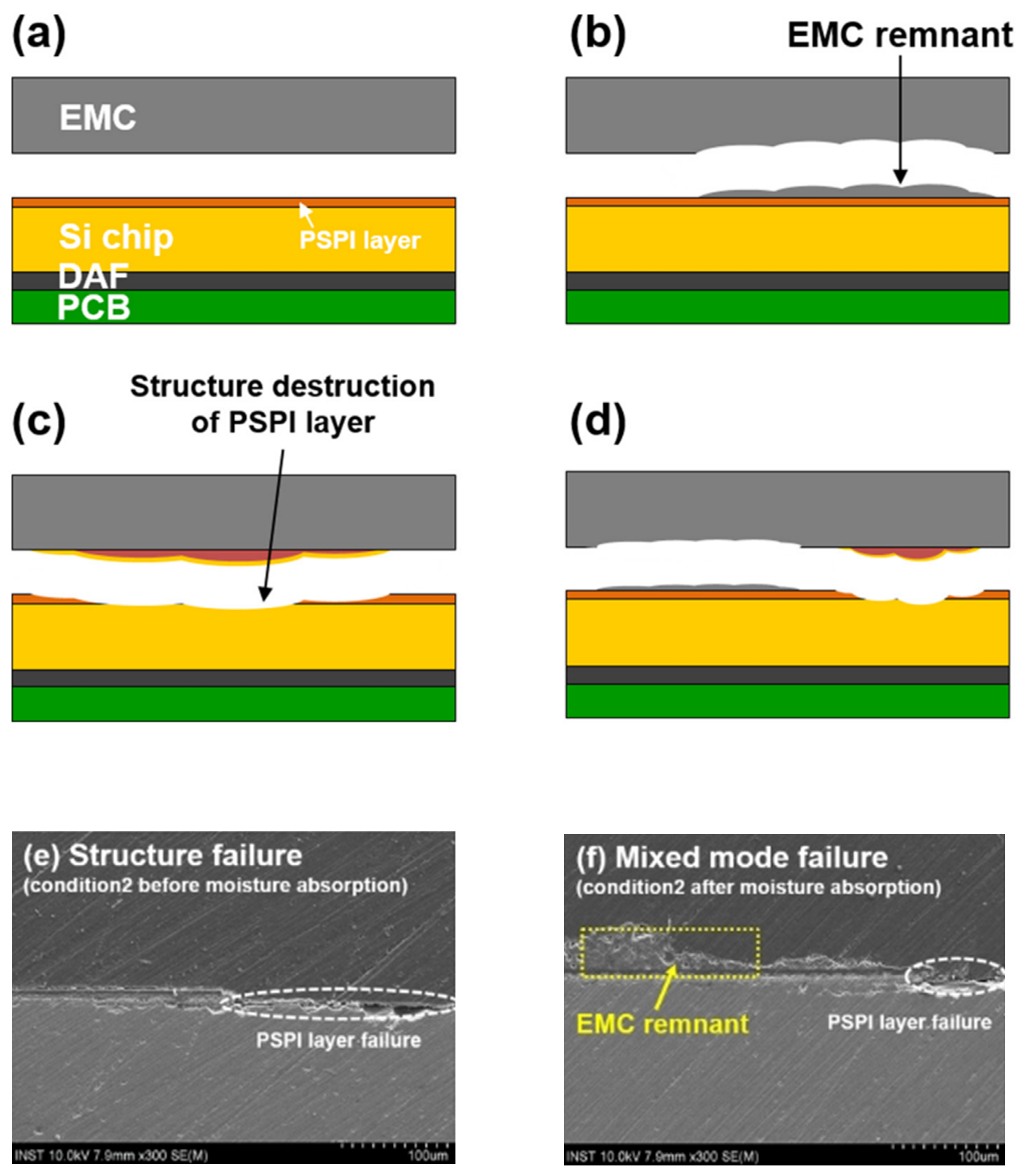


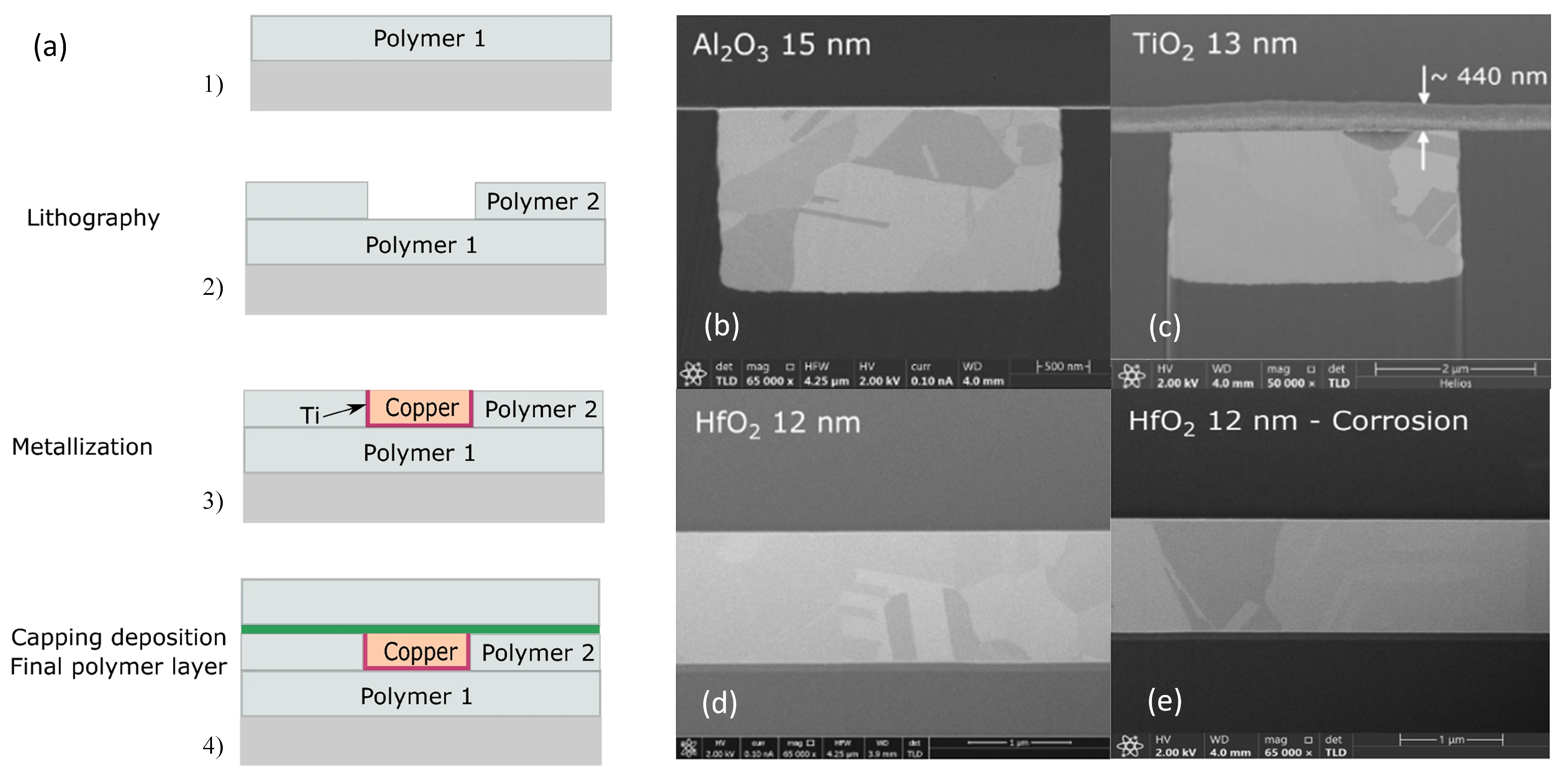
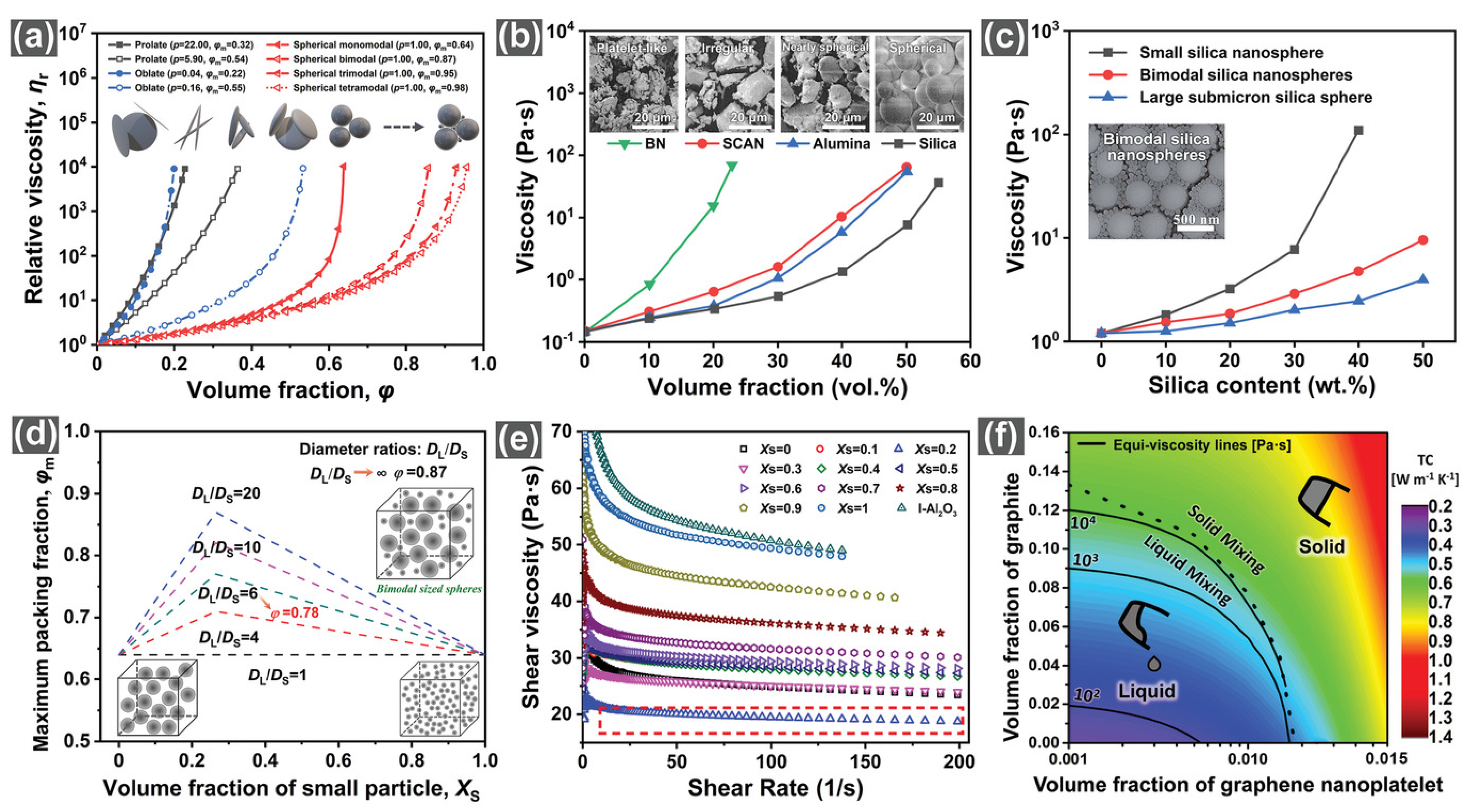
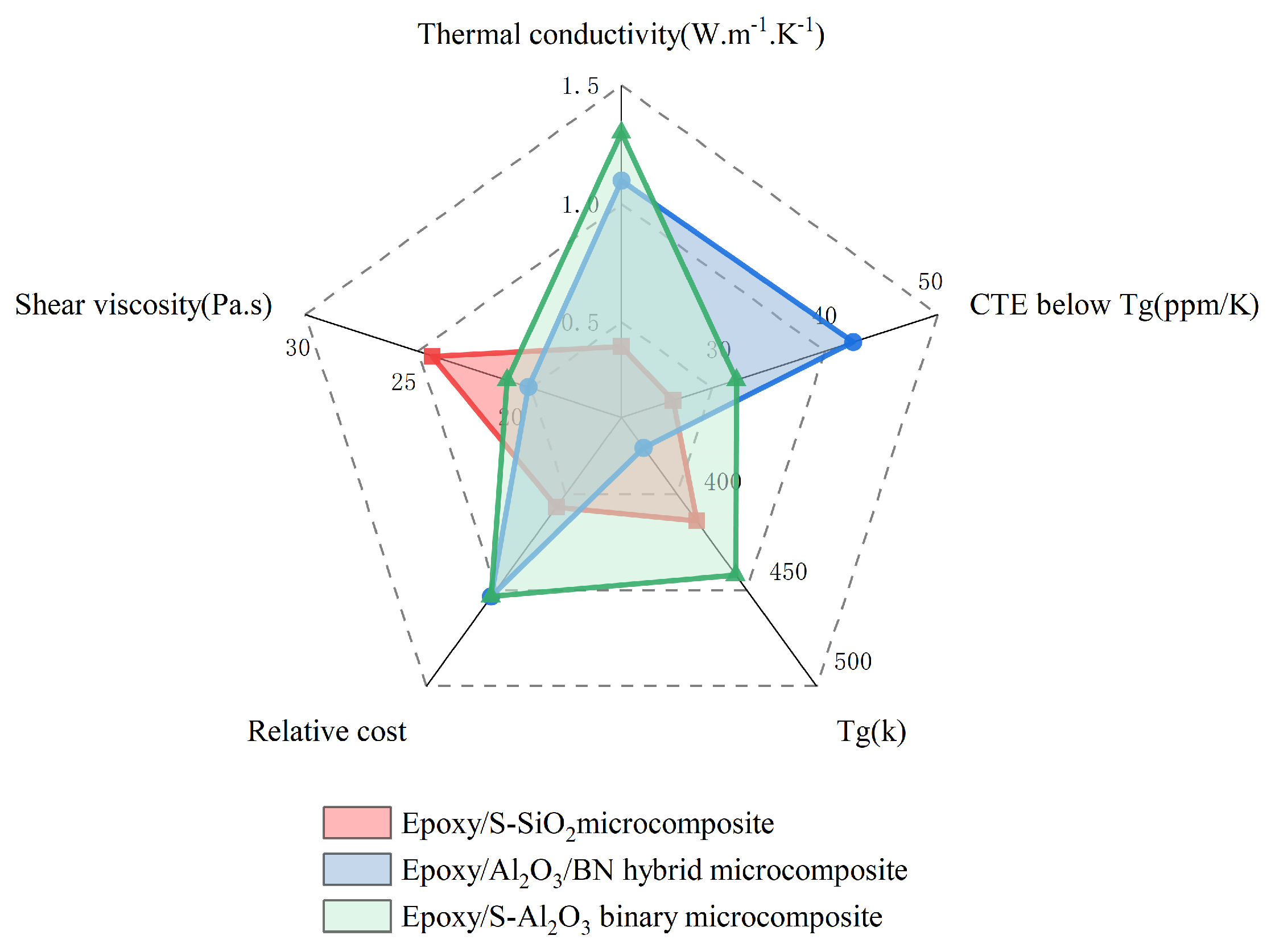
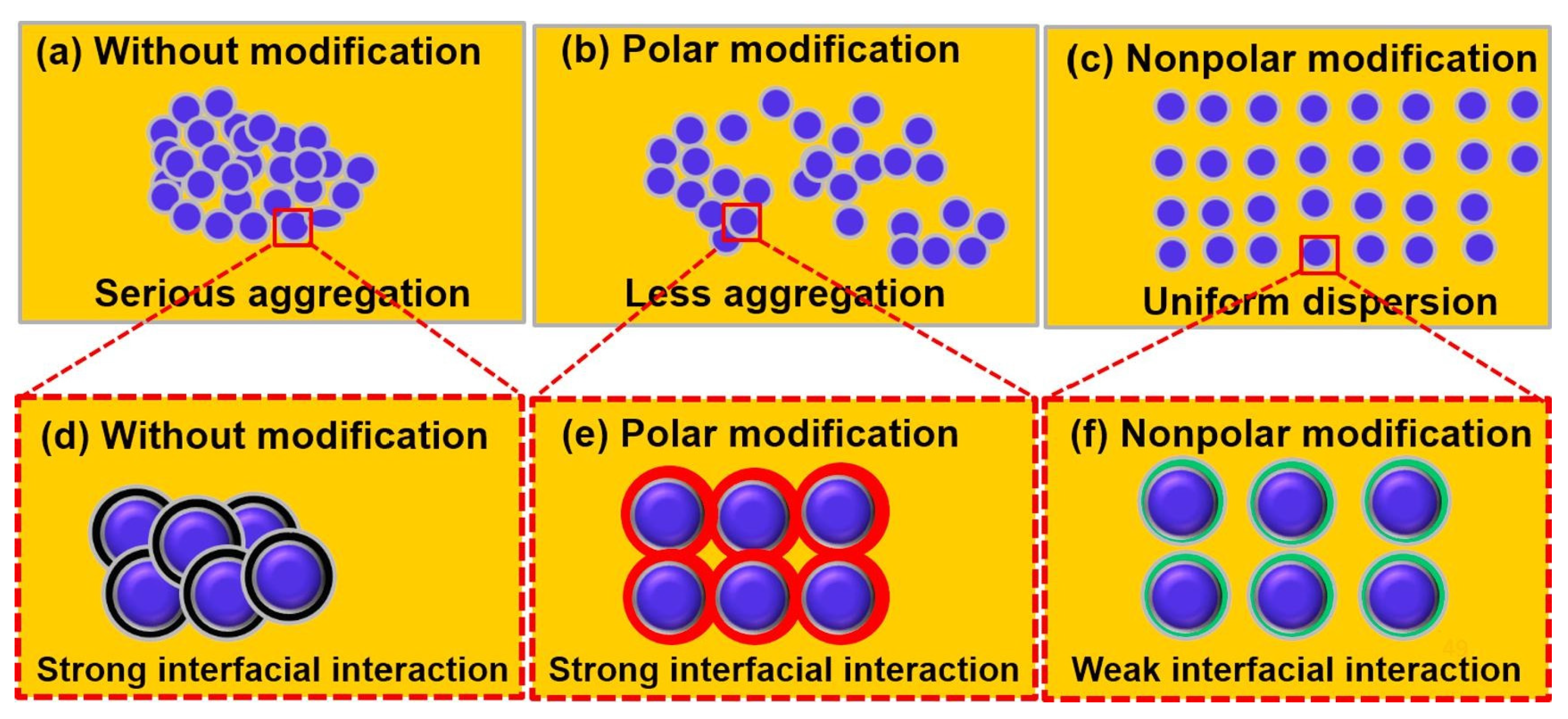
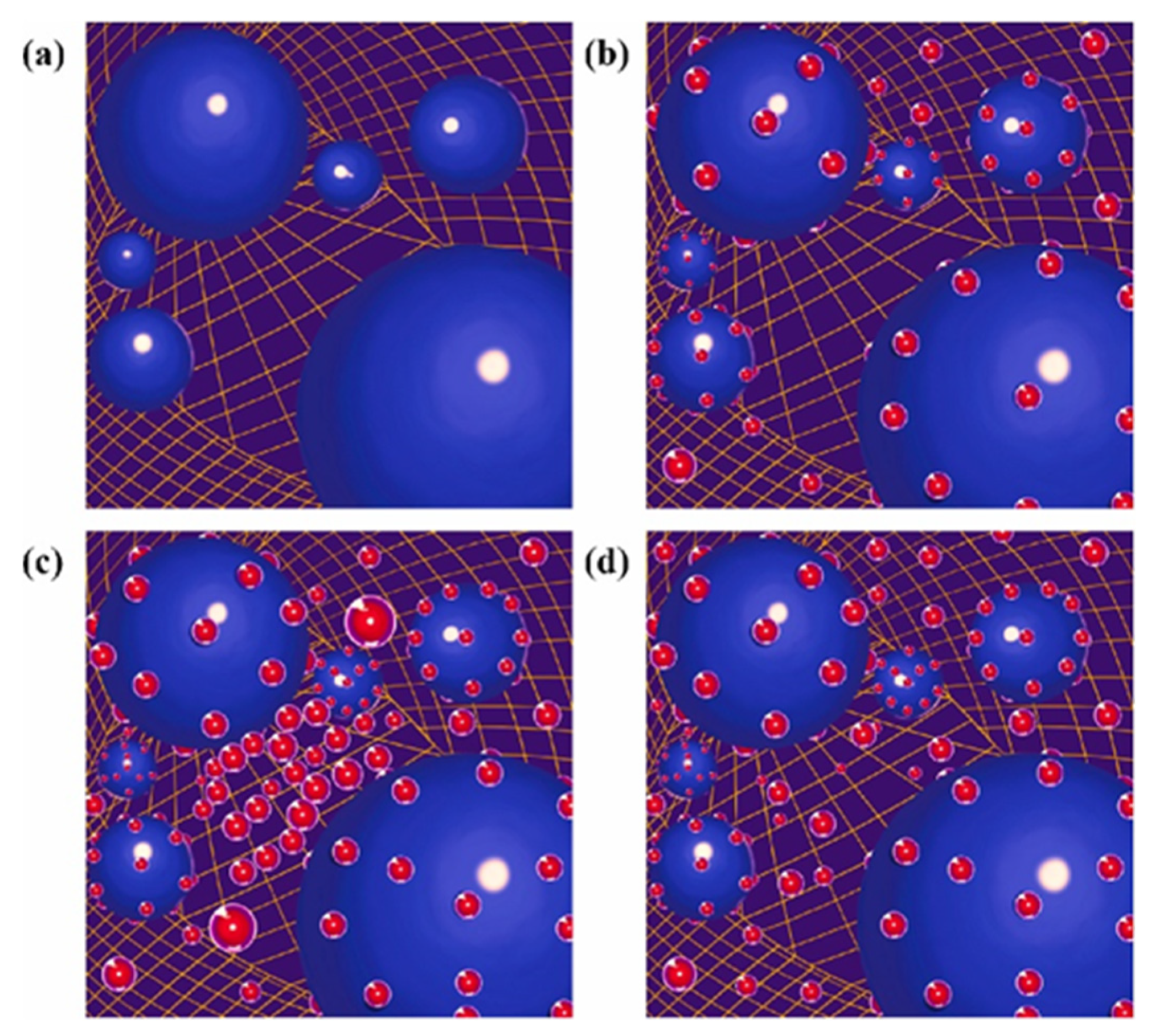

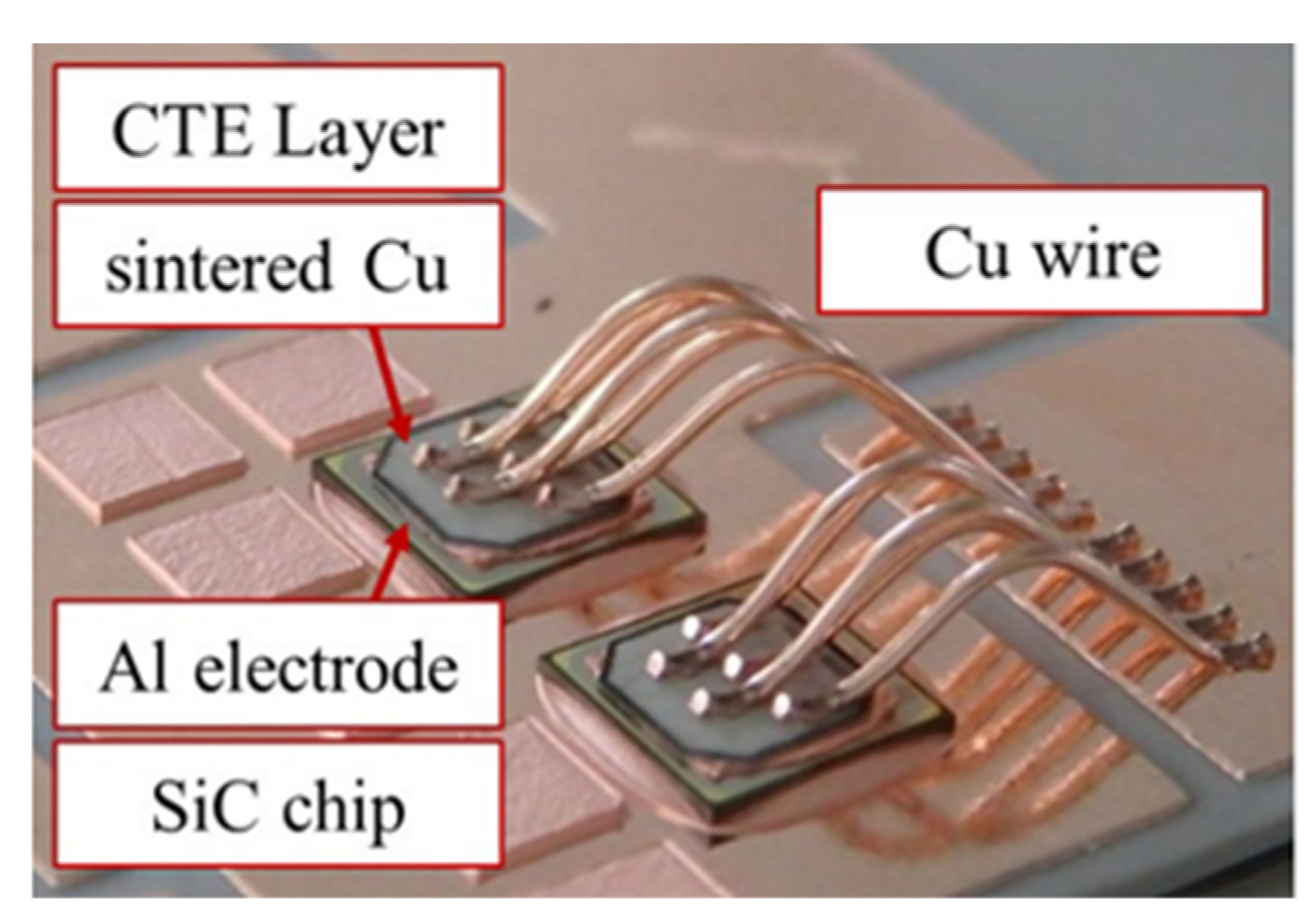
| Test Name | Conditions | Test Time |
|---|---|---|
| High-temperature storage test (HST) | 200 °C | 0, 240, 500, 1000 h |
| Temperature cycling test (TCT) | −65–150 °C dwelling time: 30 min | 0, 100, 200, 500 cycles |
| Pressure cooker test (PCT) | 121 °C, 100% RH, 2 atm | 0, 96, 192 h |
| Connection Process | Chip Temperature | Substrate Temperature |
|---|---|---|
| Mass Reflow, MR | 250 °C | 250 °C |
| Thermo-Compression Bonding, TCB | 400 °C | 50 °C |
| RDL Barrier Layer | Obstructing O2 Capabilities | H2O Corrosion Resistance | Low-Temperature Manufacturability |
|---|---|---|---|
| 15 nm AI2O3 [84] | No oxide layer | Rapid failure | Best |
| 12 nm HfO2 [85] | No oxide layer | non-corrosive | Worse |
| 13 nm TiO2 [85] | 440 nm oxide layer appears | Better | |
| 200 um liquid mold layers [87] | No oxide layer | non-corrosive | Best |
| Physical Modification [104] | Chemical Anhydrous Modification [105] | Chemical Aqueous Modification [106] | |
|---|---|---|---|
| Stability | Worse | Better | Best |
| Compatibility | Some improvement | Significant improvement | Significant improvement |
| Viscosity | Possible negative effects | Viscosity reduction | Viscosity reduction |
| Thermo-Mechanical Properties | Plasticizing effects occur | No significant improvement | Significant improvement |
| Properties | No Toughening Agent | Carboxy End Seal [109] | 2.0 wt% Silicone Rubber SR [114] | BCP M52N with 83 wt% SiO2 [112] |
|---|---|---|---|---|
| Interfacial Adhesion | Benchmark | ↓ | ↓ | M52N increased to 1.5 wt% slightly ↓ |
| Hygroscopicity | Benchmark | ↓ | ↑ | M52N increased to 1.5 wt% slightly ↑ |
| Delamination resistance | Benchmark | - | after 1000 cycles ↓ | Continuously ↑ as M52N increases |
| Thermo-mechanical Properties | Benchmark | Tg ↓ | Tg ↓ | - |
| Thermal Stability | Benchmark | - | - | - |
| Thermal conductivity | Benchmark | - | - | ↑ |
| Toughness | Benchmark | ↑ | ↑ | Continuously ↑ as M52N increases |
| Mechanical Properties | Benchmark | ↓ | ↓ | Continuously ↑ as M52N increases |
| Fluidity | Benchmark | ↓ | ↓ | Continuously ↓ as M52N increases |
Disclaimer/Publisher’s Note: The statements, opinions and data contained in all publications are solely those of the individual author(s) and contributor(s) and not of MDPI and/or the editor(s). MDPI and/or the editor(s) disclaim responsibility for any injury to people or property resulting from any ideas, methods, instructions or products referred to in the content. |
© 2024 by the authors. Licensee MDPI, Basel, Switzerland. This article is an open access article distributed under the terms and conditions of the Creative Commons Attribution (CC BY) license (https://creativecommons.org/licenses/by/4.0/).
Share and Cite
Tian, W.; Chen, X.; Zhang, G.; Chen, Y.; Luo, J. Delamination of Plasticized Devices in Dynamic Service Environments. Micromachines 2024, 15, 376. https://doi.org/10.3390/mi15030376
Tian W, Chen X, Zhang G, Chen Y, Luo J. Delamination of Plasticized Devices in Dynamic Service Environments. Micromachines. 2024; 15(3):376. https://doi.org/10.3390/mi15030376
Chicago/Turabian StyleTian, Wenchao, Xuyang Chen, Guoguang Zhang, Yuanming Chen, and Jijun Luo. 2024. "Delamination of Plasticized Devices in Dynamic Service Environments" Micromachines 15, no. 3: 376. https://doi.org/10.3390/mi15030376




